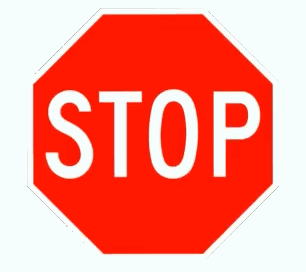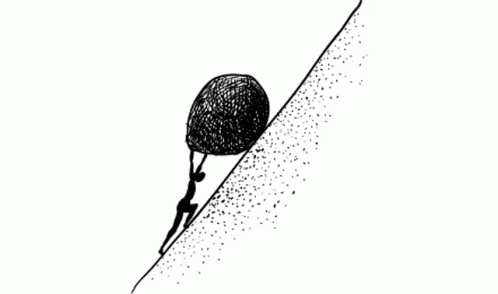Hi! I’m Natasha, and I love a good plan.
I love it when a plan comes together. I value action. I appreciate reliability—when words and actions match up. When someone does what they said they were going to do… I love it! 😍
So why, with this mindset, does something as simple as making an Instagram post on Canva 🫠 sometimes feel like I’m pushing a boulder up Snowdon?!
I have the ✨ plan ✨
I know ✨ why ✨I want to follow the plan
I’m ready to take ✨ action ✨
I sit down to follow through…
And resistance shows up.
At first, I felt frustrated. But then I noticed something - I wasn’t just resisting the task. I was nervous about getting into a battle with resistance itself. I knew that if I pushed too hard, I’d end up overwhelmed.
So, I got curious: What’s really going on here?
5 Explanations for Resistance
1. Your brain thinks change = danger
Your brain’s number one job? To keep you safe. And it doesn’t just protect you from physical threats - it protects you from uncertainty, discomfort, and failure.
So when you try to start something new - whether it’s writing, showing up online, or making a big decision - your brain throws up resistance to stop you.
How it shows up:
You keep “preparing” but never start.
You feel exhausted at the thought of taking action.
You tell yourself you’ll “feel ready” soon but that moment never comes.
✅ What helps: Instead of waiting for resistance to go away, expect it. When it shows up, you can say: “Oh, this means I’m stepping outside my comfort zone.” Then take one tiny action.
2. Willpower isn’t the problem - it’s decision fatigue
Have you ever noticed that resistance feels stronger at the end of the day? That’s because willpower isn’t endless - it drains like a battery.
If you’ve spent your whole day making decisions, managing responsibilities, and dealing with stress, by the time you get to your own goals, you’re mentally done.
How it shows up:
You feel motivated in the morning but stuck by the afternoon.
You keep putting off deep work because your brain is too “full.”
You scroll instead of starting because it requires less mental effort.
✅ What helps: Do the hardest thing first. If resistance is highest when you’re depleted, move your important work to when your energy is higher (even just 10 minutes in the morning).
3. You secretly doubt it’s worth it
If you don’t believe something will lead to success, your brain will resist it.
This isn’t conscious - you think you want to take action, but deep down, a voice whispers:
❌ “This won’t work anyway.”
❌ “What if no one cares?”
❌ “Is this even worth my time?”
And when you don’t believe in the reward? Resistance wins.
How it shows up:
You start a project, then second-guess if it’s the “right” thing.
You keep switching strategies because nothing feels perfect.
You hesitate to put yourself out there because what if no one responds?
✅ What helps: Don’t wait for certainty - focus on commitment. Instead of “Will this work?” ask yourself, “What if I just trusted myself and finished it anyway?”
4. You’re avoiding discomfort (not the task itself)
Most of the time, you’re not actually resisting the thing - you’re resisting the feeling that comes with it.
Writing? It can feel hard to start. But dealing with the possibility of criticism? That’s uncomfortable.
Starting a business? Exciting. But facing rejection? That’s terrifying.
How it shows up:
You overthink every move because failure feels personal.
You avoid certain tasks because they trigger imposter syndrome.
You’re waiting to feel “ready” before taking action.
✅ What helps: Discomfort doesn’t mean stop. It means you’re doing something that matters. Instead of resisting the feeling, acknowledge it: “I feel nervous because this is important to me.” Then, take action with the discomfort.
5. The hardest part is starting
Ever noticed how once you start something, it’s easier to keep going? That’s because your brain doesn’t like unfinished tasks - it creates mental tension that makes you want to complete them.
The problem? Getting past the initial resistance is the hardest part.
How it shows up:
You put off tasks for weeks - then finish them in 30 minutes once you start.
You struggle to begin projects but find flow once you’re in it.
You tell yourself it’ll take hours - but in reality, it’s way quicker.
✅ What helps: Use the ‘10-Minute Rule.’ Tell yourself, “I’ll just do this for 10 minutes.” Momentum will kick in, and you’ll likely keep going.
Takeaway🍕:
When resistance shows up, instead of waiting for it to disappear:
✅ Expect it.
✅ Name it.
✅ Take action anyway.
BONUS Tip ✨: Name your resistance
Sandra? Gladys? John? Rocco? Elizabeth? Katie? Frank? Storm? Keira? Bradley?
By naming your resistance, you create distance from it. Next time it shows up, try saying:
“Oh hi, Frank! I thought you might show up today. I know you don’t want to write this Substack post, but we’ve committed to publishing this week, so let’s crack on.”
For me, I resonate with “I doubt it’s worth it” the most, very representative of my rollercoaster relationship with Instagram. When I had this experience recently, I noticed the resistance, I felt the sensations, and ultimately I cracked on. I posted a reel! A tiny but mighty moment 👏🏻
Let’s chat: Do you experience resistance when you’re being creative?
Which explanation resonates with you the most? Let me know in the comments!







